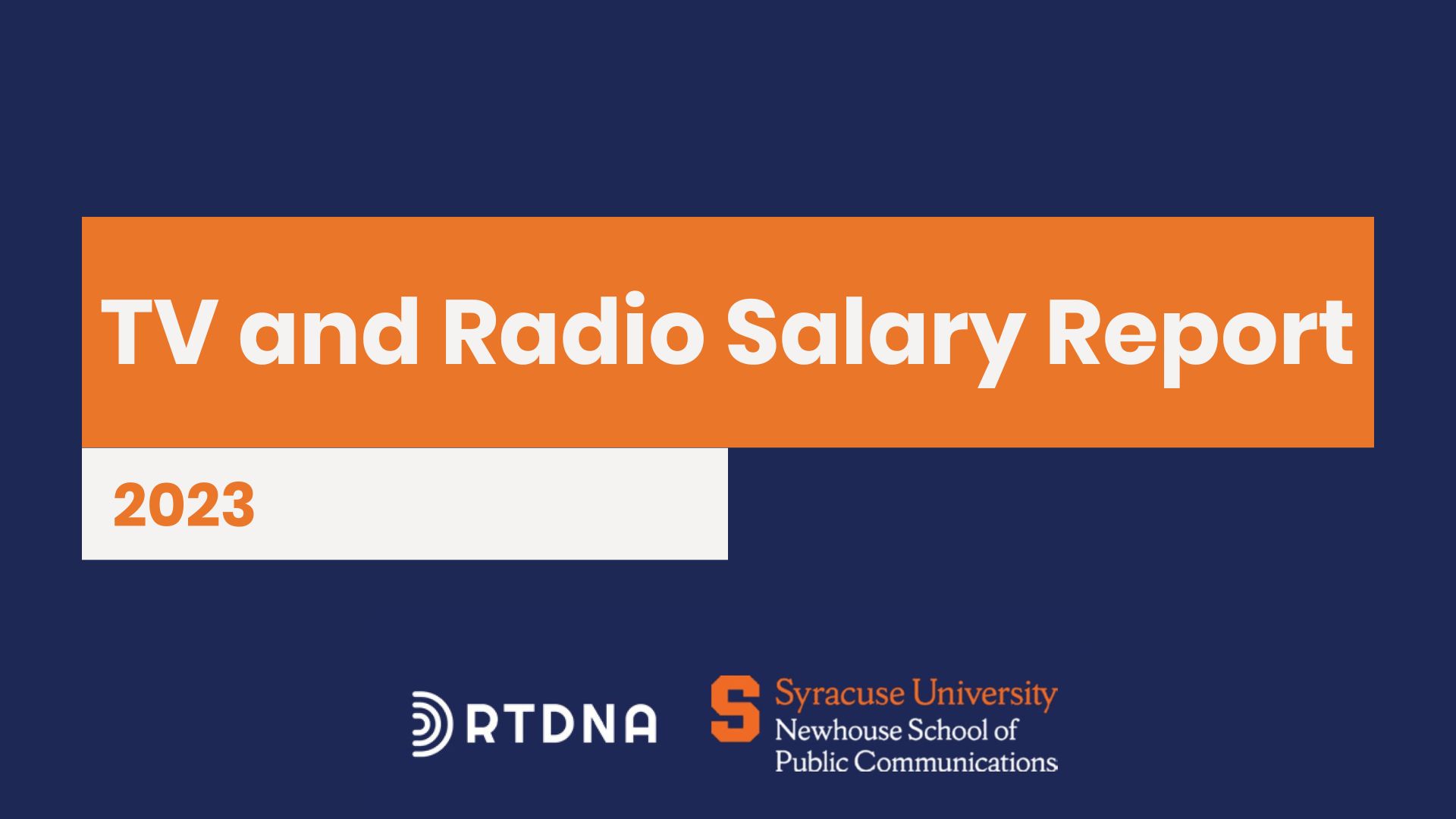2023 TV and Radio News Salaries

By Bob Papper and Keren Henderson
TV
Overview
The latest RTDNA/Newhouse School at Syracuse University Survey found that local television news salaries rose by 4% in 2022. That’s better than last year’s 1.1% (two years ago, salaries rose by 3.5%). But inflation in 2022 hit 6.4% so 2022 was the second straight year of a drop in real (after inflation) wages: down 2.4% this year after last year’s 5.9% shortfall. That brings the two-year cumulative loss to 8.3% in terms of real wages.
Market size
Market size may well determine whether you thought 2022 was a good year or a poor one. In Markets 1-25 (90%) and 151+ (94%), an overwhelming majority of newsrooms reported salary gains, and most newsrooms in Markets 26-50 (75%) and 101-150 (63%) also reported salary gains. Newsrooms in Markets 51-100, however, were not as fortunate. Only 37% of those newsrooms reported salaries were up, and 47% reported salaries actually decreased in 2022.
Benefits
There have been some noticeable changes from a year ago. Stations that paid health insurance jumped to 38.6% — an increase of nearly 13% compared to last year — while partly paid health insurance dropped by only 3.5%. That’s a big gain. Stations that paid drug plans rose by 4%, and stations that paid maternity or paternity plans went up by more than 7%. Stations that contribute to 401k or 403b rose by 4%. Even paid vacation went up by 2%.
Starting pay
Staff salaries may have seen a disappointing edge upward, but that difficulty in recruitment shows up in a big jump for starting salaries. The average starting pay rose 15% to $37,600 and the median starting pay went up even more: 18.2% to $37,000.
Purchase Full TV Salary Report (Free for Members!)
Radio
Overview
For the third year in a row, radio salaries failed to rise to the level of inflation. In 2021, although inflation that year was just 1.4%, radio salaries went up a paltry 0.9%. Last year was a lot worse, with radio salaries up just 0.4% and inflation at 7%. This year, salaries are up 4.5%, but with inflation at 6.4%, it’s another year of losing ground. Over the last three years, radio news salaries are down a cumulative 8% in terms of real wages.
Market Size
Major market newsrooms accounted for a dip in management salaries, and large markets increased or held steady across job titles. Mostly, salaries go up as market size goes up — no surprise there. They also tend to go up as staff size increases, but much of that is a function of market size as well.
Commercial vs. Non-Commercial
Overall, non-commercial salaries are substantially higher than commercial ones. But that’s not a completely fair comparison as the vast majority of non-commercial stations in the survey are in large and major markets. So we compared commercial and non-commercial salaries only in the two largest market groups. It’s still not a clean comparison, but there’s no question that non-commercial salaries are higher than commercial salaries. Substantially higher.
Starting Pay
Despite the difficulty in hiring, starting pay rose along with salaries generally – though maybe not quite as dramatically as salaries in general. Median starting pay went up a substantial increase of 9.4%. Average starting pay rose just 3%.
Purchase Full Radio Salary Report (Free for Members!)
Bob Papper is Research Professor of Broadcast and Digital Journalism at Syracuse University and has worked extensively in radio and TV news.
Keren Henderson is Associate Professor of Broadcast and Digital Journalism at Syracuse University and has worked in local TV news as a producer and video editor.
This research was supported by the S. I. Newhouse School of Public Communications at Syracuse University and the Radio Television Digital News Association.
About the Survey
The RTDNA/Newhouse School at Syracuse University Survey was conducted in the fourth quarter of 2022 among all 1,812 operating, non-satellite television stations and a random sample of 4,819 radio stations. Valid responses came from as many as 1,365 television stations (75.3%) and 777 radio news directors and general managers representing 2,514 radio stations. Some data sets (e.g. the number of TV stations originating local news, getting it from others and women TV news directors) are based on a complete census and are not projected from a smaller sample.
